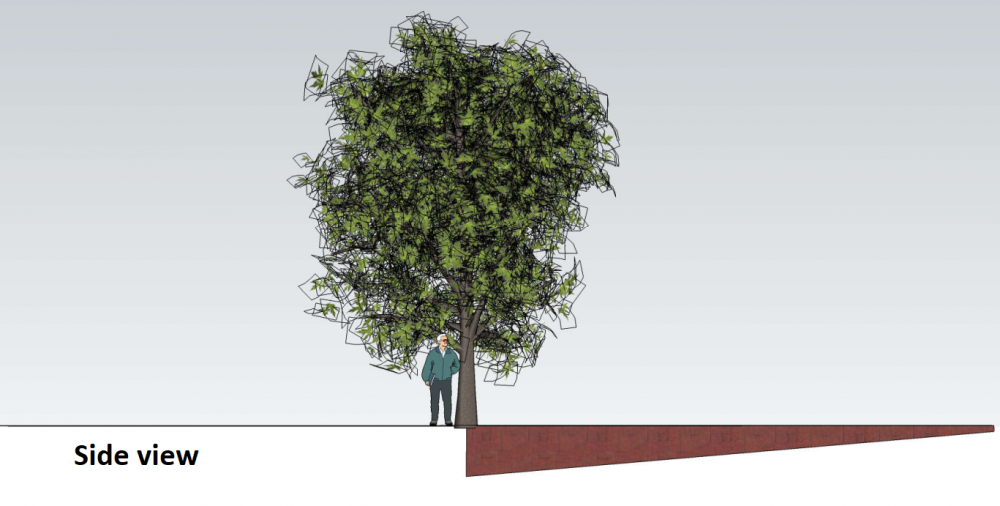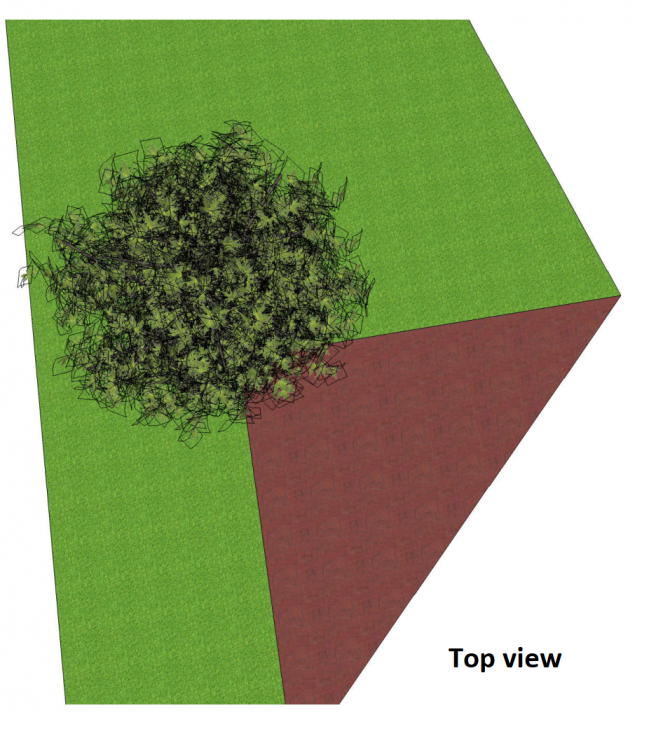Hi,
I am applying for a research grant to inspect root system extents of trees in India to prove photographically and measurably that they are mostly shallow (generally) to help convince people to stop damaging tree roots so much. The results would be freely available and shared extensively.
The trees would be 10- 15 meters tall, average spread, except for one palm species. The idea is to dig within only a quarter of a semi-mature tree's root system, so as not to strain it. It would be in the rainy season. We will go down to 3 meters if we need to (we get 6 months of dry period here so chances are we have a few trees with deep tap roots).
Lateral extent of digging would be a quarter of a circle (the canopy being the circle) but up to RPA radius (to begin with). So, generally I would assume at least 10 meters out but less deep as we go out.
Soils would be mainly (I am not yet certain of the structure of these yet but will find out):
Laterite Soil: The term is derived from the word 'Later' which means 'brick'. Laterite soil is found in those regions of the country which receive heavy rainfall with alternate dry and wet period - particularly, near the coasts. This kind of soil becomes soft when wet and hardens when dry. In these climatic conditions, leaching of soil takes place which is a process in which fertile portion of the soil gets washed away by heavy rains. They are formed from the decomposition of rocks and contain iron oxide which gives them red or pink colour. This type of soil is normally deficient in nitrogen and is poor in lime content; it is an acidic soil.
and
Alkaline Black cotton soil: Characteristics of Black Soils


Questions:
1: What sort of time will it take per tree? Calculations on soil volume removed per tree range from 20m3 to 40m3. So how much time per m3?
2: Current setup idea is Airspade 2000, 105 cfm combined with this soil vacuum. Any feedback about this? Go higher with Airspade cfm? Other better soil vacuum? Other ideas? Bear in mind that I am in India so things will need to be shipped as these things are not available here. Lighter soil vacuums would be better.
3: With this setup, can I go 3 meters? Can I go deeper than that?
4: Any other ideas?
Thank you!
Island
https://guardair.com/products/55-ga...onductive-drum-vacuums?variant=11617637433388
I am applying for a research grant to inspect root system extents of trees in India to prove photographically and measurably that they are mostly shallow (generally) to help convince people to stop damaging tree roots so much. The results would be freely available and shared extensively.
The trees would be 10- 15 meters tall, average spread, except for one palm species. The idea is to dig within only a quarter of a semi-mature tree's root system, so as not to strain it. It would be in the rainy season. We will go down to 3 meters if we need to (we get 6 months of dry period here so chances are we have a few trees with deep tap roots).
Lateral extent of digging would be a quarter of a circle (the canopy being the circle) but up to RPA radius (to begin with). So, generally I would assume at least 10 meters out but less deep as we go out.
Soils would be mainly (I am not yet certain of the structure of these yet but will find out):
Laterite Soil: The term is derived from the word 'Later' which means 'brick'. Laterite soil is found in those regions of the country which receive heavy rainfall with alternate dry and wet period - particularly, near the coasts. This kind of soil becomes soft when wet and hardens when dry. In these climatic conditions, leaching of soil takes place which is a process in which fertile portion of the soil gets washed away by heavy rains. They are formed from the decomposition of rocks and contain iron oxide which gives them red or pink colour. This type of soil is normally deficient in nitrogen and is poor in lime content; it is an acidic soil.
and
Alkaline Black cotton soil: Characteristics of Black Soils
- A typical black soil is highly argillaceous [Geology (of rocks or sediment) consisting of or containing clay] with a large clay factor, 62 per cent or more.
- In general, black soils of uplands are of low fertility while those in the valleys are very fertile.
- The black soil is highly retentive of moisture. It swells greatly on accumulating moisture. Strenuous effort is required to work on such soil in rainy season as it gets very sticky.
- In summer, the moisture evaporates, the soil shrinks and is seamed with broad and deep cracks. The lower layers can still retain moisture. The cracks permits oxygenation of the soil to sufficient depths and the soil has extraordinary fertility.


Questions:
1: What sort of time will it take per tree? Calculations on soil volume removed per tree range from 20m3 to 40m3. So how much time per m3?
2: Current setup idea is Airspade 2000, 105 cfm combined with this soil vacuum. Any feedback about this? Go higher with Airspade cfm? Other better soil vacuum? Other ideas? Bear in mind that I am in India so things will need to be shipped as these things are not available here. Lighter soil vacuums would be better.
3: With this setup, can I go 3 meters? Can I go deeper than that?
4: Any other ideas?
Thank you!
Island
https://guardair.com/products/55-ga...onductive-drum-vacuums?variant=11617637433388




